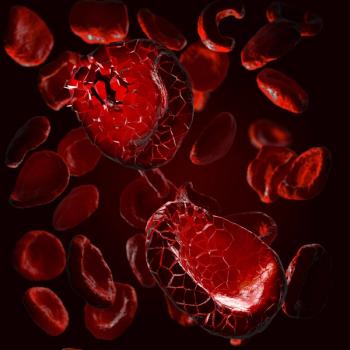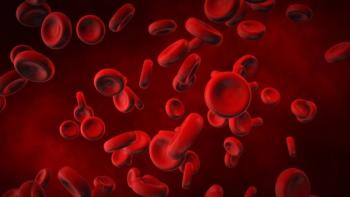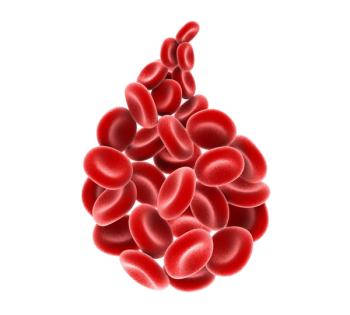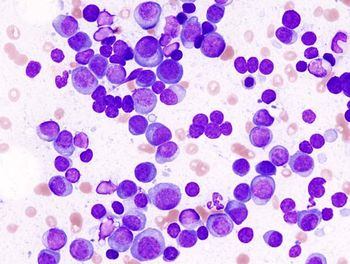
Elucidating the Clinical Landscape for Rare Lymphoma Treatment
Diagnostic developments using aberrances in biomarker testing may help enhance survival in patients with rare lymphoma subtypes.
In an interview with CancerNetwork®, Neha Mehta-Shah, MD, MSCI, associate professor in the John T. Milliken Department of Medicine in the Division of Oncology at the Washington University Medical School in St. Louis, MO, outlined the clinical landscape for patients undergoing treatment for rare lymphomas. Specifically, she touched upon developments being made to treat patients with these rare diseases, challenges to treatment, and ongoing clinical trials that appear promising for this population.
Mehta-Shah began by explaining the advancement of diagnostics in better identifying rare lymphoma subtypes and developing therapies that target specific biomarkers. She further explained that genomic testing has enabled investigators to develop and assess drugs that selectively target the epigenome to elicit better efficacy for rare lymphomas.
Highlighting national and international collaboration, Mehta-Shah remarked that biological developments in other diseases with similar genomic aberrances have resulted in translational research in rarer diseases, opening the door for the development of therapies. She further emphasized the impact of dynamic monitoring, which profiles a disease following treatment to better inform sequential lines of therapy.
Mehta-Shah then touched upon challenges in those undergoing treatment for rare lymphomas, highlighting a paucity of data compared with more common cancer types, and a reliance on findings from related diseases, subgroup analyses, or expert consensus guidelines to inform research.
She concluded by highlighting clinical trials evaluating treatment for rare lymphomas, highlighting immune checkpoint inhibition in T-cell lymphoma, antibody therapy, and the use of subsequent de-escalation of immunotherapy in Hodgkin lymphoma, among other developments.
CancerNetwork: What recent developments have been made in treating patients diagnosed with rare lymphomas?
Mehta-Shah: There have been many advances in the treatment of rare lymphomas. One big category of those is in diagnosis. There have been advances in the ability to use things like mutational profiling or genetic sequencing of cancer cells, that have helped to refine the diagnosis of rare diseases. Some of these diseases have a specific genomic hallmark that now helps us to define or identify these diseases and improve our diagnostic capability. Some of the other advances have been certainly in the development of newer therapies. Once we know how to better define these diseases, we will be able to understand their biology better, and that has led to the development of both intravenous and oral therapies for cancer. Some of these include things like immunotherapy, as well as targeted oral inhibitors.
One example of how both the diagnosis and the treatment of rare diseases have improved significantly has been in the world of rare T-cell lymphomas. We know that we used to have a grab bag term of patients who have peripheral T-cell lymphoma, not otherwise specified, and that used to be the majority of systemic or peripheral T-cell diagnoses, but over time, our ability to refine which patients had T follicular helper phenotype lymphomas, of which the prototype is angioblastic T-cell lymphoma, has improved significantly. That has been through better diagnostic criteria that include staining for things like ICOS, PD-1, and CXCL13.
In addition, genomic testing has improved our ability to help confirm these diagnoses. Many of these diseases have recurrent mutations and epigenetic modifying genes like TET2, RHOA, or IDH2 and putting all those pieces together has helped to better refine the diagnosis of the disease. That also led researchers to start looking at drugs that specifically work on the access of the epigenome to see if they have better efficacy in diseases like angioimmunoblastic T-cell lymphoma [AITL] or T follicular helper phenotype lymphomas.
One thing that we found is that drugs like romidepsin [Istodax], a histone deacetylase inhibitor, does have a higher response rate in patients who have T follicular helper phenotype lymphomas. This has also led to further studies using PI3K inhibitors that also seem to have preferential activity, we think potentially through affecting the microenvironment, and also with drugs like EZH2 inhibitors that also affect the epigenome, seem to have selective activity in AITL. That is 1 example.
If you take some of the other very rare lymphoproliferative disorders, like things like Erdheim-Chester disease, which has recurrent aberrancies in BRAF. The discovery that patients have higher expression of BRAF and [BRAF mutational status] led to the use of drugs that were developed for BRAF-mutant melanoma to be then translated to very rare diseases like Erdheim-Chester [disease], leading to long remissions on therapy.
In these rare diseases, understanding the biology had been a major impediment to the development of therapy. As we have learned more about these diseases through collaboration nationally and internationally, that has then led to translating things that we knew from other diseases to rare diseases, and then specifically developing therapies for these rare diseases.
Another area [that] will be and has already shown to be significantly important [in rare diseases], is the use of dynamic personalized medicine monitoring. What I mean by that are things that are not only using mutational profiles or baseline characteristics of the tumor but also profiling how the disease responds to therapy by using things like minimal residual disease. Almost all lymphomas, by the definition of rare diseases by the NIH, are rare diseases, because the incidence of lymphoma, specifically, is in the order of 80,000 cases per year, and that encompasses over 100 different diseases. [Essentially] every lymphoma is a rare lymphoma.
Even the most common lymphomas, like diffuse large B-cell lymphoma [DLBCL}, occur at a rate of about 5.5 per 100,000 [cases] which makes that a rare disease as well. Then there are even rarer diseases––very rare subtypes of lymphoma as well. In that realm, the use of MRD [minimal residual disease]-directed therapy in DLBCL is going to become [highly] relevant. There are already tools to look at things like cell-free DNA [cfDNA] at the end of treatment in DLBCL that have been approved.
Trials using dynamic monitoring, using cfDNA to decide to evaluate whether escalation of therapy to either other chemotherapy, stem cell transplantation, bispecific antibodies, or CAR T cells is warranted for people who were MRD-positive at the end of treatment or have insufficient decline in their cfDNA. In that world, there will also be a big shift, and that shift is already being translated into ongoing clinical trials.
What are some challenges related to rare lymphomas that health care professionals are currently facing?
There are [many] issues that make it harder to treat patients who have rare lymphomas. Then there are additional issues with rare lymphoma research. Particularly rare lymphomas ––now we are talking about lymphomas that make up 2% to 4% or 5% of all lymphomas––often are understudied. Some of these are diseases for which [it] is particularly ... challenging for pathologists to make the diagnosis, [because] it often takes a longer time to make the diagnosis [as some] may have never seen this disease before. We usually have to send the biopsies off to an expert laboratory, academic medical center, or reference laboratory, and that can often take weeks to make the diagnosis, which can be [quite] hard for both doctors and patients, particularly if patients are symptomatic.
Then when we look at how much information there is to guide our options for therapy, there is often a paucity of prospective, well-vetted data to help guide therapy. In other diseases, like breast cancer or lung cancer, we are fortunate to have these large studies where half the patients got treatment X and half the patients got treatment X plus Y, and you can inform patients about what their choice is and the risks [and benefits] of adding Y to X...
In rare diseases [more specifically] rare lymphomas, sometimes the whole study, to help inform a patient’s therapy, there could have been [15 to 30] patients, and all those patients [received] the same therapy. It was not directly compared with any other therapy. Sometimes you are extrapolating information from related diseases to their disease. It can be hard to take care of these patients because it requires digesting the information that is available and sometimes relying on expert consensus guidelines to help guide your decision-making.
Sometimes we have these rare lymphomas and to better understand them and categorize them, are put together in 1 category, but they usually encompass more than 1 type of disease. Marginal zone lymphoma [MZL] is a perfect example of that, where patients can have MZL, but there are multiple subtypes of MZL: patients who have primary cutaneous MZL; patients who have splenic MZL; nodal MZL; or mucosal-associated MZL.
These are fundamentally different diseases. They have different biological drivers. They have a different propensity to affect different areas of the body, and we treat these differently. Because MZLs are rare, most studies in MZL encompass all of these subtypes, helping a patient understand how a particular drug or therapy is going to work for them relies on us to then look at that data specific to that patient and do a subgroup analysis. Usually, those numbers get small in helping to understand the likelihood of response or the duration of response for a particular patient.
While we do not rely on retrospective studies in all areas of medicine to inform our practice in rare diseases, sometimes retrospective studies ... [or] real-world registry type of studies may be the best type of information we have to help guide our clinical decision-making or inform the development of national guidelines.
What ongoing clinical trials currently evaluating treatment in patients with rare lymphomas appear promising?
There are many agents currently being studied that are promising in rare lymphomas, [which] I will break down into certain categories. In one group of studies, the studies in T-cell lymphoma, we have been excited about the development of both PI3K inhibitors and EZH2 inhibitors in T-cell lymphomas, because the studies now consistently across multiple drugs in the same class, for both types, seem to show that these are efficacious drugs, even when chemotherapy or other standard agents have not been efficacious. These patients have particularly few options for standard treatment, nationally and internationally, so that is one group of therapy that we are [particularly] excited about for rare diseases like cutaneous T-cell lymphoma.
There are studies exploring those classes of medicines which are exciting, but then in addition, there have been studies looking at novel antibodies, particularly [those] against KIR3DL2 which have shown durable remissions with improved quality of life for these patients who suffer high impairment in their quality of life when due to both their disease and in some situations, due to their treatment. We are excited about this novel class of medicines in that arena.
The other area that I will say that we are excited about is the use of immunotherapy in Hodgkin lymphoma, which is also a [particularly] rare lymphoma, but a significant number of people with Hodgkin’s lymphoma are young adults. As we have gotten better at treating and curing some of these patients, we are trying to develop treatments that have [fewer adverse] effects long term and do not increase their risk of other health care events like heart attack, strokes, breast cancer, and other cancers. The development of immunotherapy earlier in the course of therapy [in the phase 3 S1826 trial (NCT03907488)], which was a large US intergroup effort to demonstrate that nivolumab with doxorubicin, vinblastine, and dacarbazine (AVD) may be beneficial, at least with the progression-free survival benefit over brentuximab vedotin-AVD, that is exciting.1
How to now de-escalate that therapy and potentially give less chemotherapy or monitor quality of life to decrease long-term [adverse] effects, is one of the goals. There is currently a US intergroup study [NCT06745076] looking at patients who have early-stage Hodgkin lymphoma incorporating brentuximab-vedotin and nivolumab earlier in their course of therapy.2 Similarly, that is measuring survival, survivorship, as well as quality of life.
References
- Herrera AF, LeBlanc M, Castellino SM, et al. Nivolumab+AVD in advanced-stage classic Hodgkin’s lymphoma. N Eng J Med. 2024;391(15):1379-1389. doi:10.1056/NEJMoa2405888
- Personalized reduction of chemotherapy intensity through ctDNA evaluation for the treatment of patients with advanced Hodgkin lymphoma. ClinicalTrials.gov. Updated March 10, 2025. Accessed April 11, 2025. https://tinyurl.com/2vs2hf5r
Newsletter
Stay up to date on recent advances in the multidisciplinary approach to cancer.

















































































